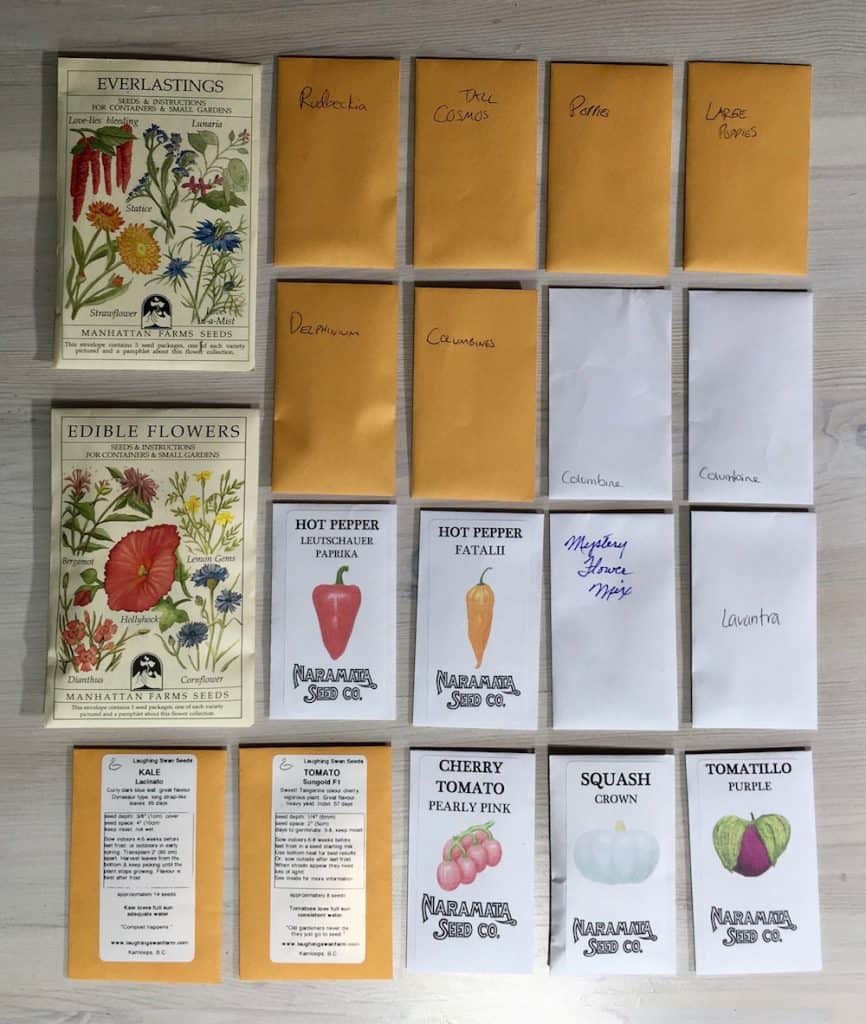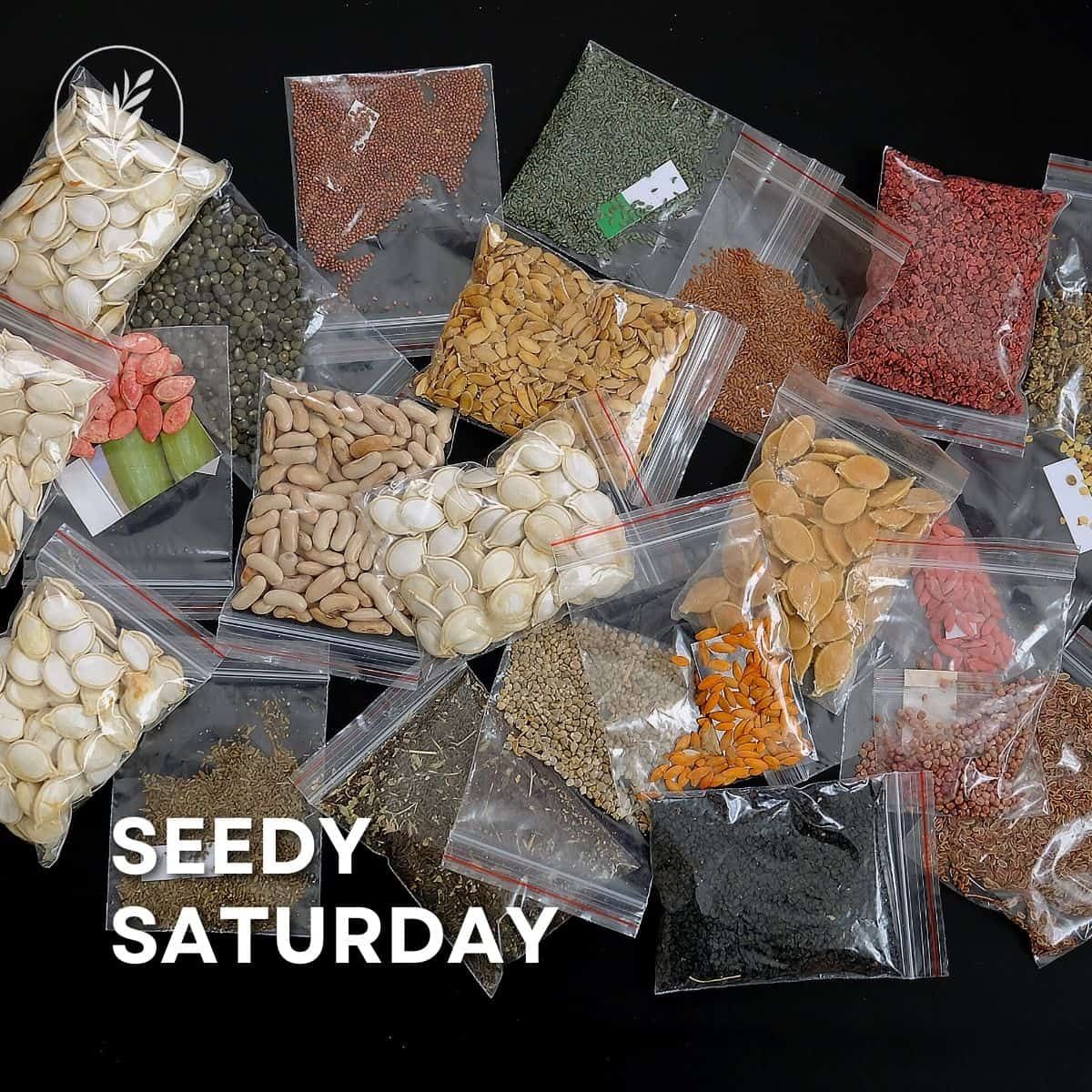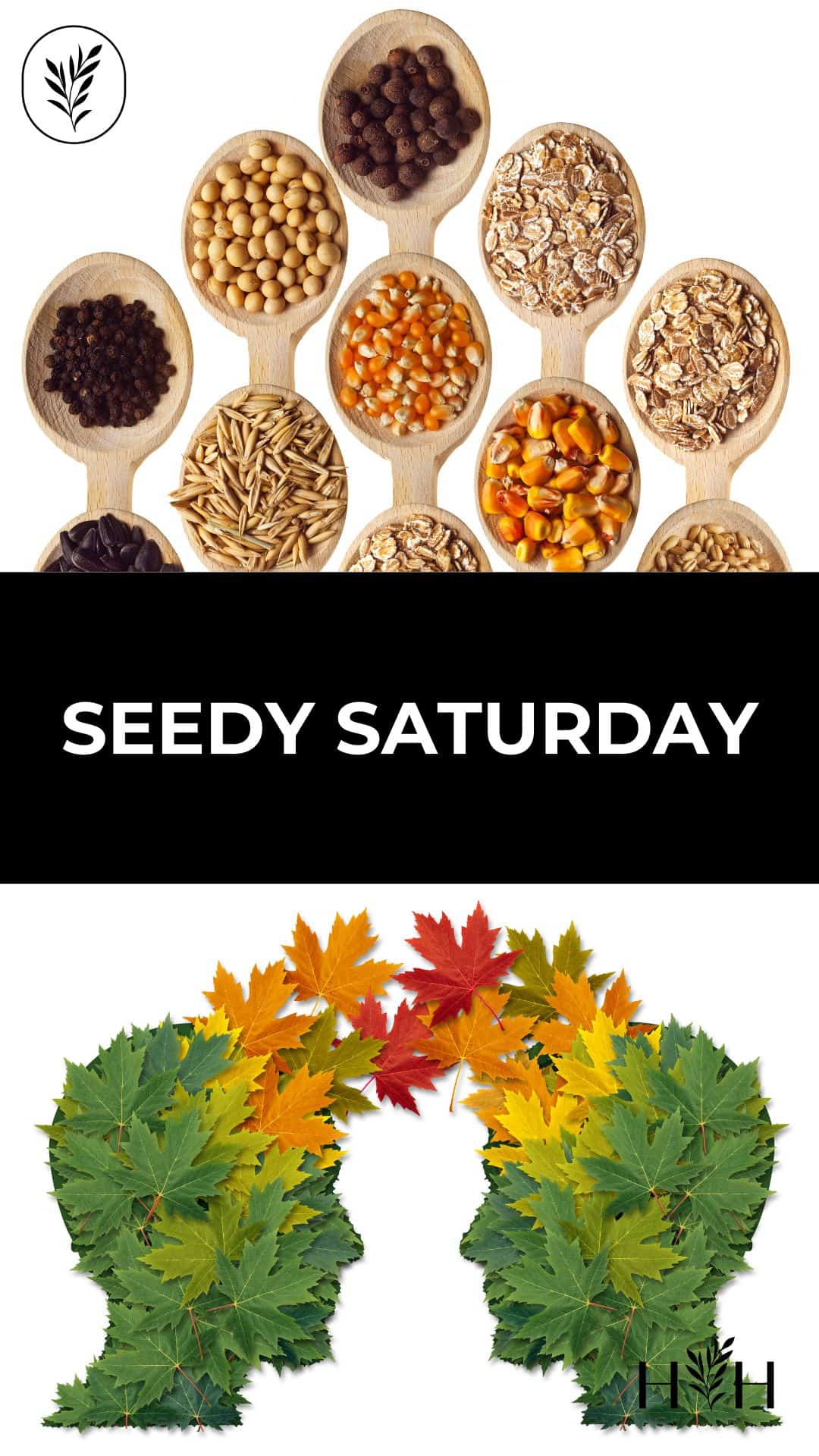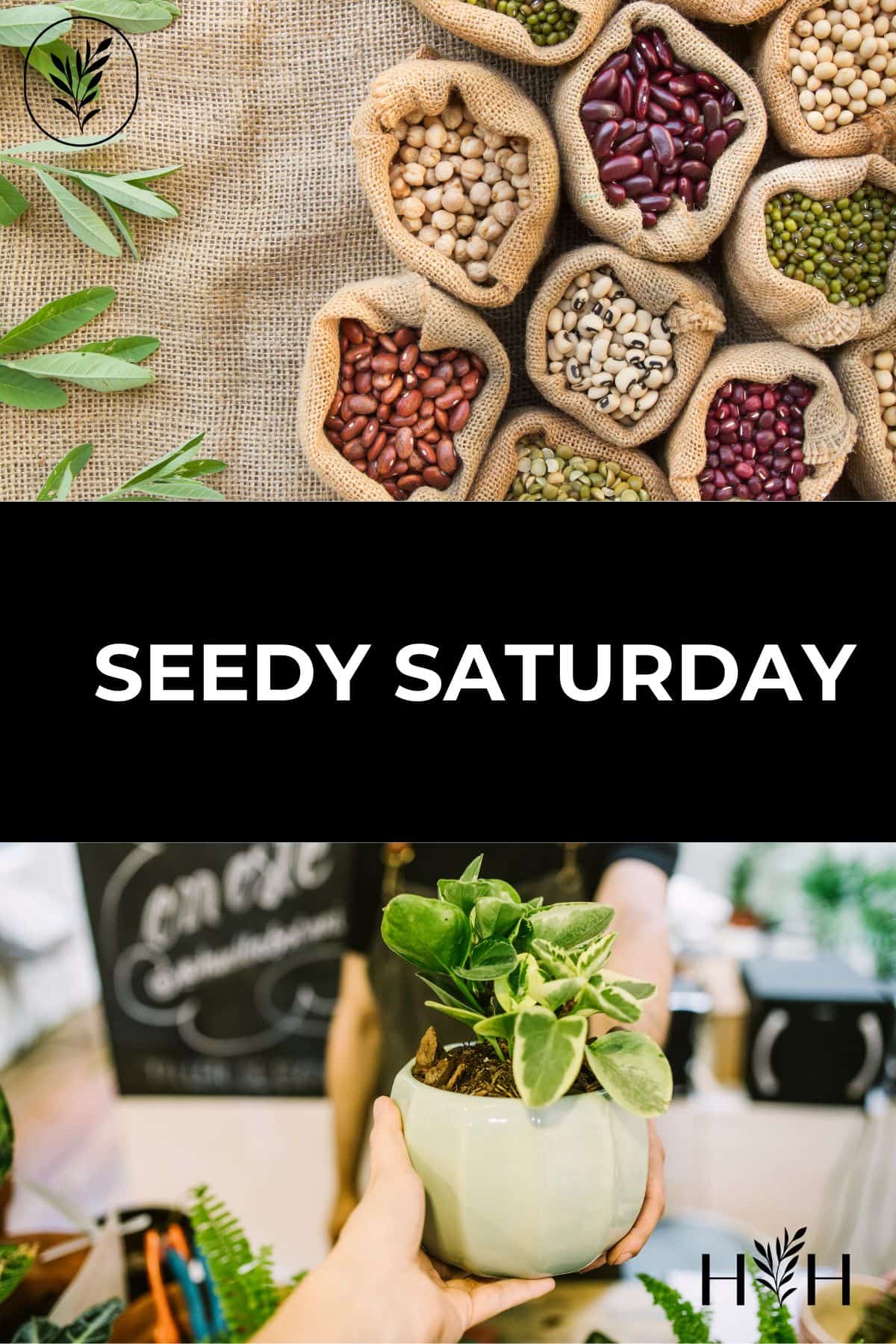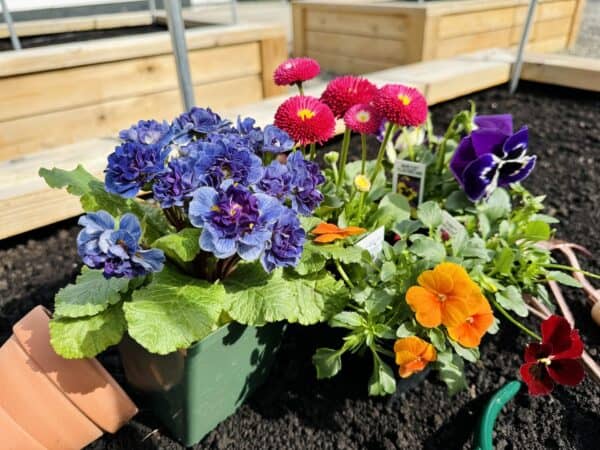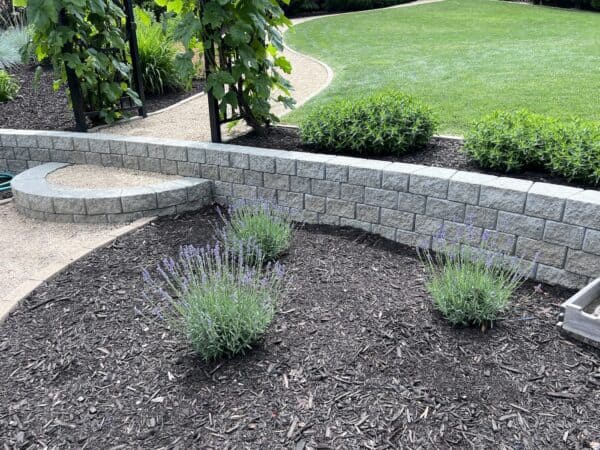Seed swaps are annual community events at which gardeners trade (and sometimes purchase) plant seeds from other local gardeners and farmers. Nicknamed Seedy Saturday, these events generally take place from January to March each year at a local community center.
Seedy Saturday (or Seedy Sunday) seed swaps are the perfect place to find seeds that are often free or very affordable, come with growing tips, and are already adapted to your local climate!
What is a seed swap/seedy Saturday event?
A seed swap is a community event at which public-domain seeds are traded and sold. The events range from informal gatherings between friends to large events hosted by local organizations. Some seed swaps are entirely cash-free (trade only), but most consist mainly of direct seed sales by local farmers, with a smaller community free-swap area.
The focus is generally on heirloom organic seeds maintained by individuals or families, sometimes throughout many generations. There may even be plant seedlings or small perennial plants available.
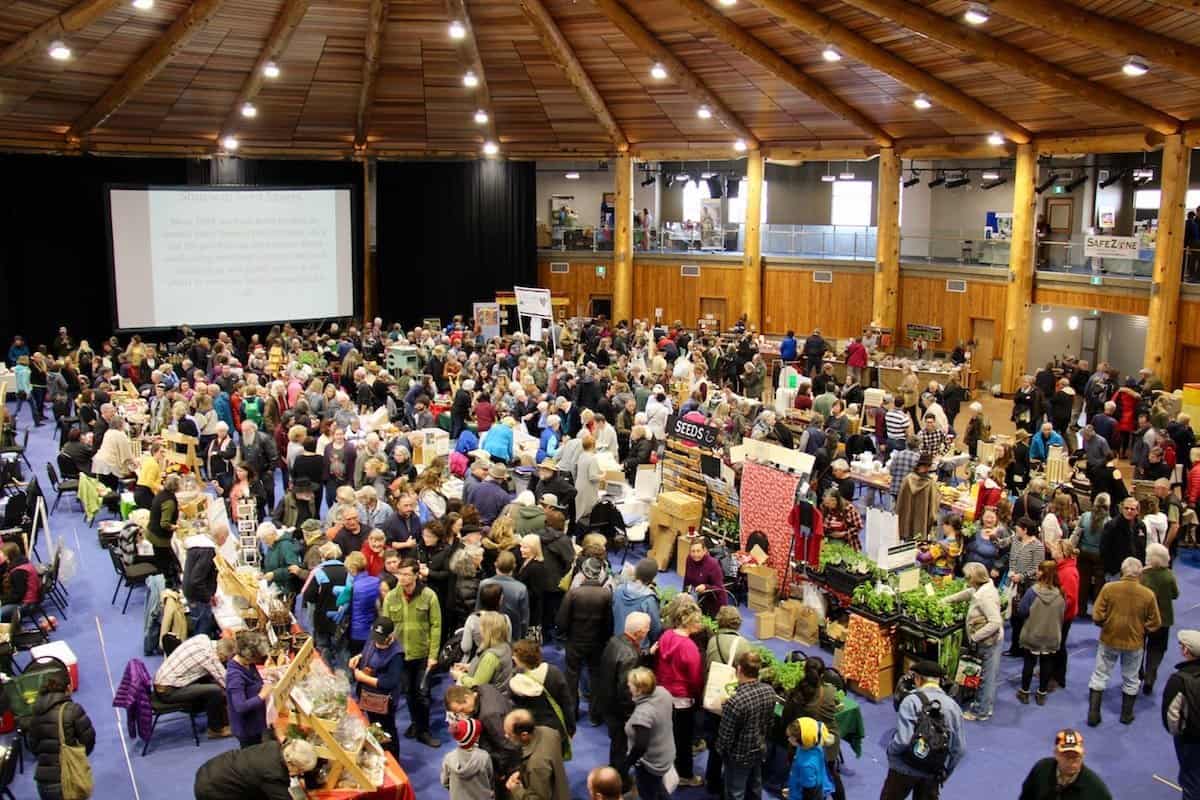
Entrance fees to seed swaps are generally absent or minimal (just enough to cover the rental cost of the venue). Since seed sellers show up in person, there are rarely booths from national companies at seed swaps. Most sellers are local gardeners, farmers, or seed savers. Many of these seed sellers will have their own specialties.
In addition to the sales tables, a true seed swap will have a community swap area. This is a space where gardeners can bring seeds they’ve saved/collected in the fall and leave them for other gardeners. Seedy Saturday events without community swap tables are basically just winter/indoor farmers’ markets that focus on selling seeds. The swap tables are what really make a seed swap a seed swap!

Finding local seedy Saturday seed swaps/seed exchanges
Since Seedy Saturdays are generally grassroots local events, the best place to look for them is in your local community! Check community bulletins in January to see if there are any events in your area. This includes checking online community pages.
One of the best places to find local seed swaps is on Facebook. Seed swap organizers will often make Facebook Events for their swap, which you can find through a simple search on Facebook. Alternatively, search for seed swaps in your area using Google. Sometimes they will be labeled Seedy Saturday or even Seedy Sunday, so be sure to vary your search terms.
If you live in Canada, seeds.ca is a great resource for finding local seed swap events. This organization maintains a list of many of the Seedy Saturday events in Canada. Check out their list and see if your community is holding a swap.
If you can’t find a local seed swap, be sure to ask your garden mentor and other local gardening experts. They will know about local events! If there isn’t a local event yet, perhaps they can help you start your own. Once you’ve found (or decided to host) a local seed swap, note the dates so that you can be well-prepared by the time the event rolls around.
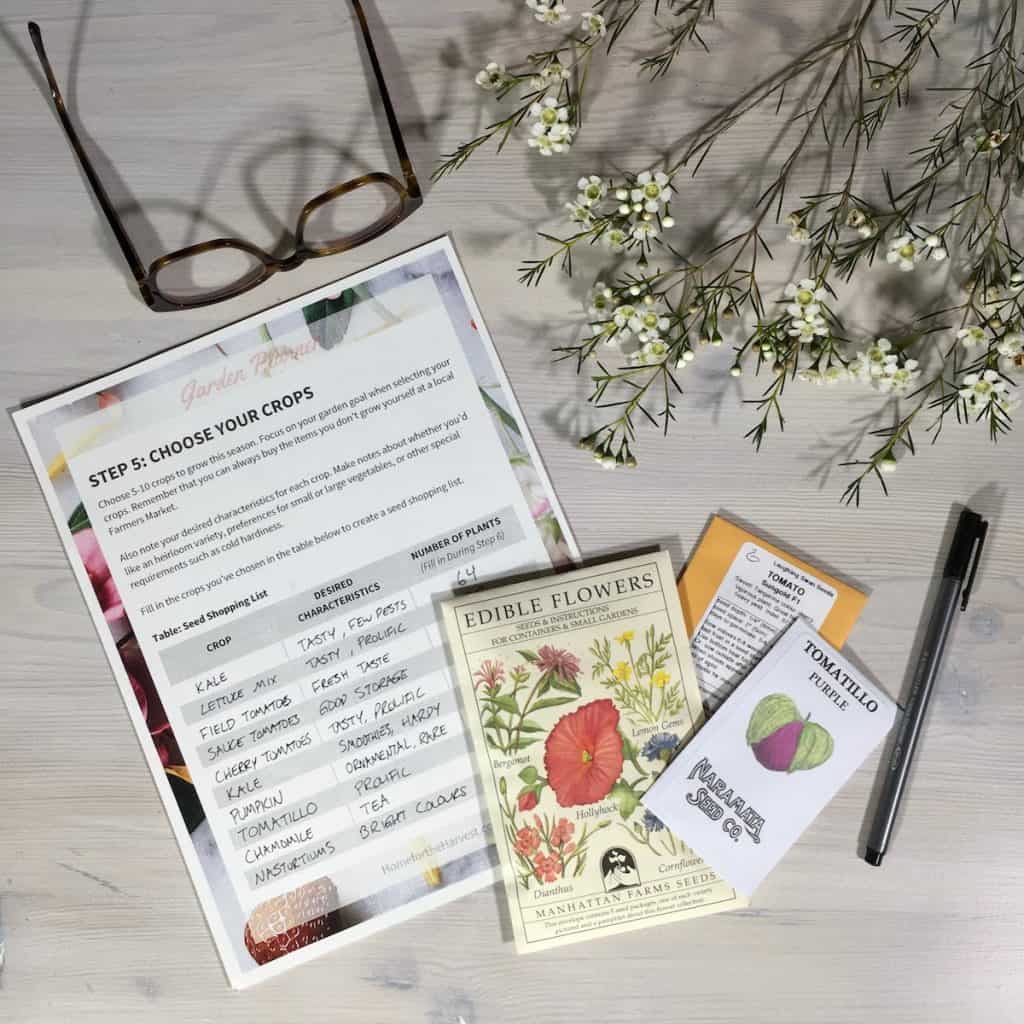
How to get free seeds from a seed swap
If you intend to come home from your local seed swap with some seeds, it’s best to be prepared. This means making a list of everything you’re looking for, gathering the right supplies, and arriving at the swap at the right time.
Going into a seed swap without a list is dangerous. You’re liable to get interested in the first table you see, and by the time you start looking for what you meant to take home, all the seeds of that type are gone.
Make a list of the seeds you really want, grouped by type if you have time (root veggies, flowers, et cetera). Draw stars beside any rare must-haves so you can look for those first if things are really crazy. Also make note of the characteristics you’re looking for, such as seeds with a short growing season or heritage seeds.
Use the seed shopping list included in my free garden planner for this purpose if you don’t already have a list to take to the seed swap with you.
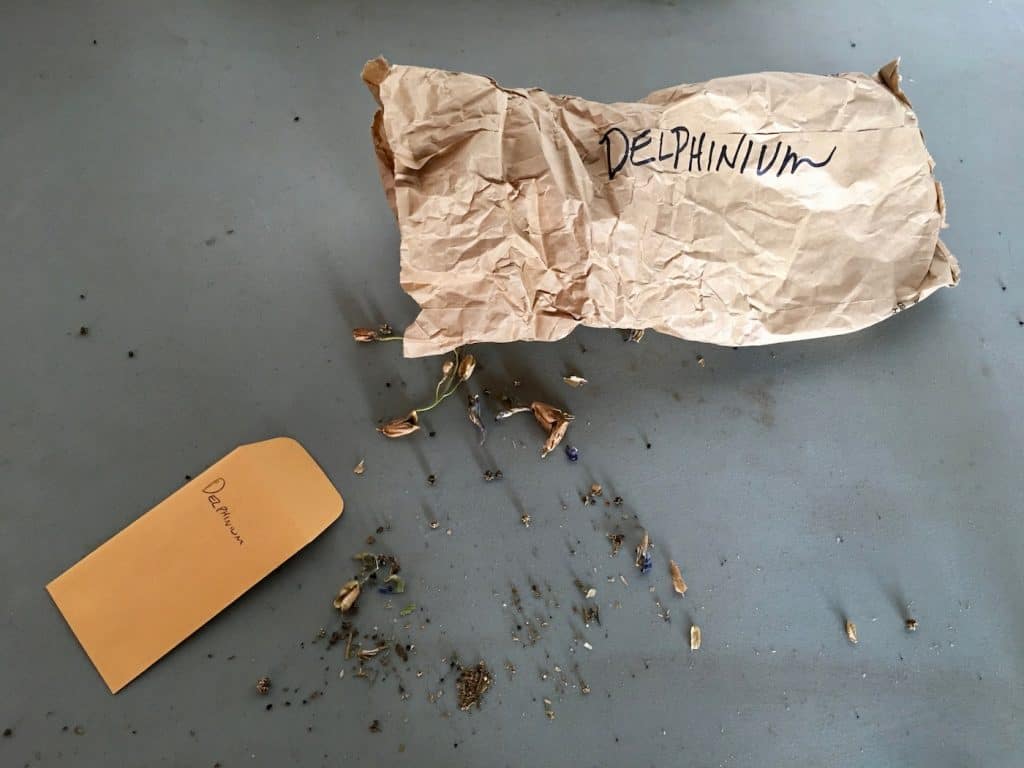
What to bring to the seed swap
In addition to your shopping list, it’s also important to bring the right supplies to the seed swap. The easiest way to collect and transport your seeds is in small envelopes. Most swaps will have a few envelopes around so that you can take home small amounts of various seeds, but it’s often best to bring your own.
Bring some small manila envelopes (called coin envelopes) or re-use the envelopes that your mail comes in (just open your mail through the short end of the envelope. It can also be handy to bring some larger ziplock bags to collect seeds that are still in their seed pods and may not fit in envelopes.
Also, bring a few pencils/pens so that you can label the seeds correctly. An over-the-shoulder bag will hold these supplies, as well as the filled packets once you’ve done your seed collecting. If you’re very into cleanliness, you may also want to bring a pair of thin gloves.
In addition to seed-collecting supplies, it’s also good to bring some cash for your entrance fee, any seeds/products you buy, or snacks you’d like. A mix of bills and coins should work well for this. Set a budget before you go and stick to it!
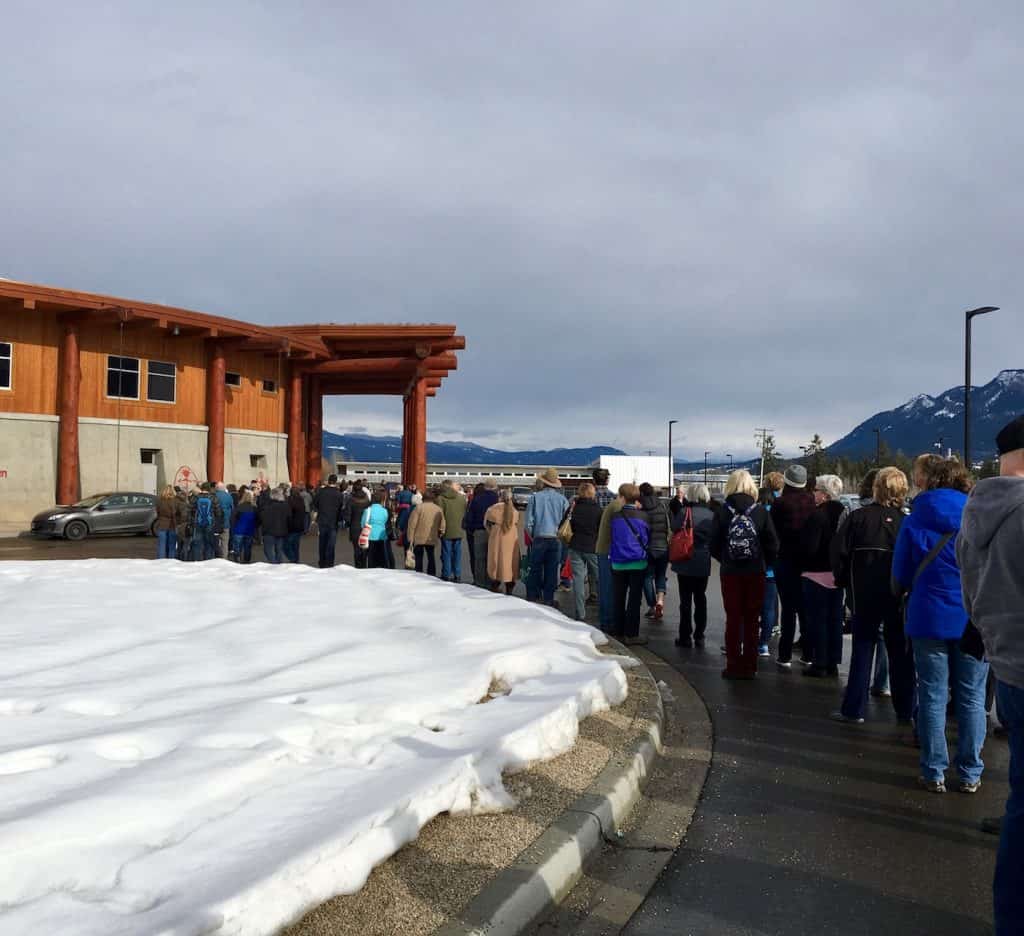
Planning out your seedy Saturday timeline
To get the best free seeds from your local Seedy Saturday seed exchange, go early! Arriving early will ensure you get the best selection of seeds, especially if your event accepts and pre-packages seeds prior to swap day.
There can be a bit of a rush right at the beginning, so remember to be polite and give everyone a turn at the swap tables. No one appreciates being shoved out of the way by a crazed heirloom tomato fan bent on getting free Brandywine seeds.
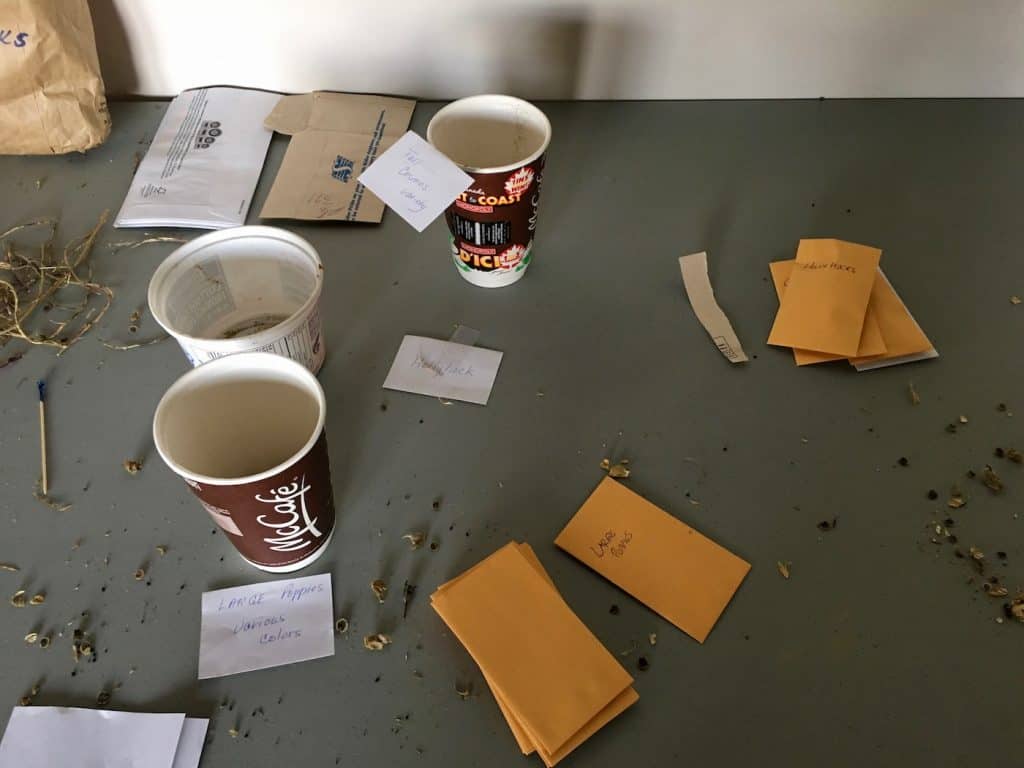
Some seed swaps have very organized swap areas, while others are a bit of a free-for-all. At a very organized swap, organizers will accept seeds from local growers for months prior to the event and spend the winter cleaning and sorting them into small amounts to give out on swap day. There may also be separate tables or areas for each type of seed. For instance, there may be an “easy vegetables” table, a “flower seeds” table, or a “native plants” table.
It’s very nice when the tables are set up in an organized fashion with clear labels so you know exactly where to leave the seeds you’ve brought and exactly where to look for the ones you’d like to take home. If the tables aren’t labeled when you get to the swap, ask an organizer to give you a general description of where things are before you dive in.
While you’re browsing the tables, keep your list in mind and go for those things first. If you see someone dropping off a seed you’re interested in, take a quick moment to ask them if they have any growing tips.
When you do collect seeds into your little envelopes, make time to legibly record the information about the seed, including the type, variety, and any growing tips. Some seeds may not have all this info, so just do the best you can. If there is a very comprehensive label with the seeds you’re taking, snap a quick photo with your phone to save time writing details down.
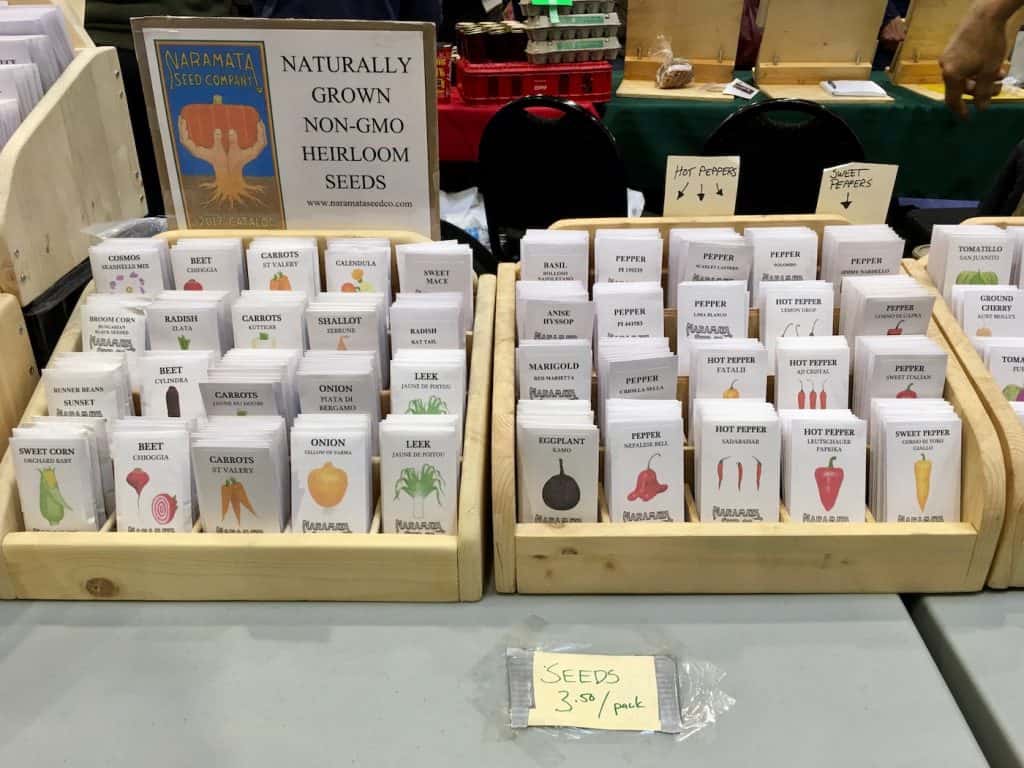
Buying seeds at seedy Saturday
Once you’ve got the free seeds you wanted from the seed swap area, you can fill your remaining seed shopping needs from the sales tables. Take a look around before you buy any seeds if you don’t yet have a preferred vendor. Keep your preferences in mind, such as if you’re looking specifically for organic seeds or heirloom seeds.
Once you find the seeds you’re interested in buying from a vendor you trust, be sure to ask the vendor for growing tips. Write the tips on the seed packet or make a note in your free pdf garden planner.
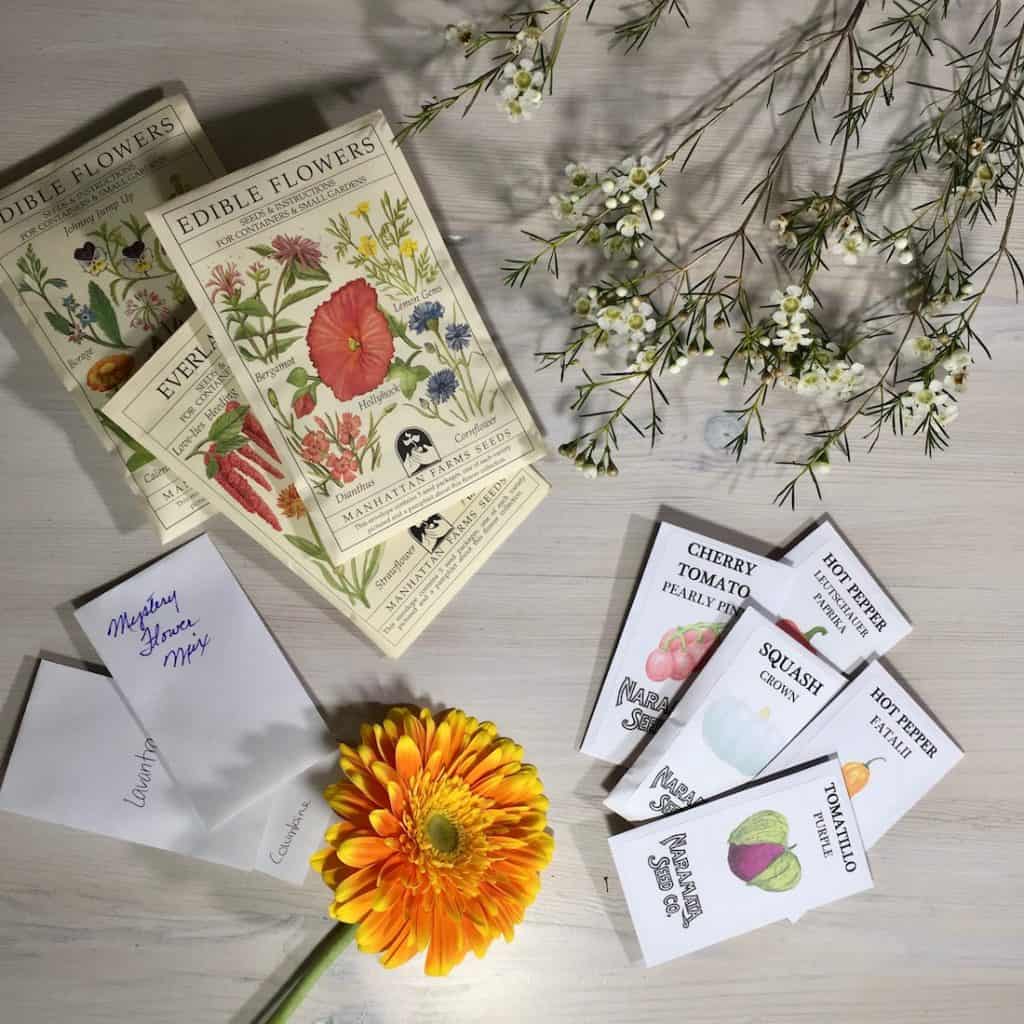
Bringing seeds to a seed swap to give away
If you’ve saved lots of your own seeds, it’s very nice to bring some to the local Seedy Saturday seed swap to share them with other local gardeners. Unless your event has a huge team of volunteers, it’s best to clean the seeds and package them nicely before dropping them off.
This means that you should take the time to separate the seeds from their pods and stalks so that you’re bringing only seeds rather than a bunch of mixed plant matter. It’s better to bring seeds in their pods than no seeds at all, but it will make everyone’s day a lot smoother if you separate the seeds out before dropping them off at the seed swap.
In terms of packaging, you can likely just bring the seeds together in one package per type of seed. That way, people can choose how many seeds they would like to take. Make sure to bring each type of seed in a package that’s easy to take the seeds out of (and easy to see the seeds). Repurposed yogurt containers and take-out trays work well. Just make sure it has a tight lid so that no seeds spill on the way to the swap!
Once you’ve got a good container, it’s time to label it. Make a clear label that includes the type of seed, as well as the variety. If you don’t know the exact variety, that’s ok, but make sure you state that the variety is unknown. It’s also kind to write a few characteristics of the seed on the label. A description of the plant’s size, color, and other distinguishing features can go far.
Also, make a note of whether you have or have not used chemical fertilizers on the plant that the seeds came from. If you have a photo of the plant to put on the label, that’s great too! Just be sure to give some sort of indication of what the seeds are so that people know what they’re getting.
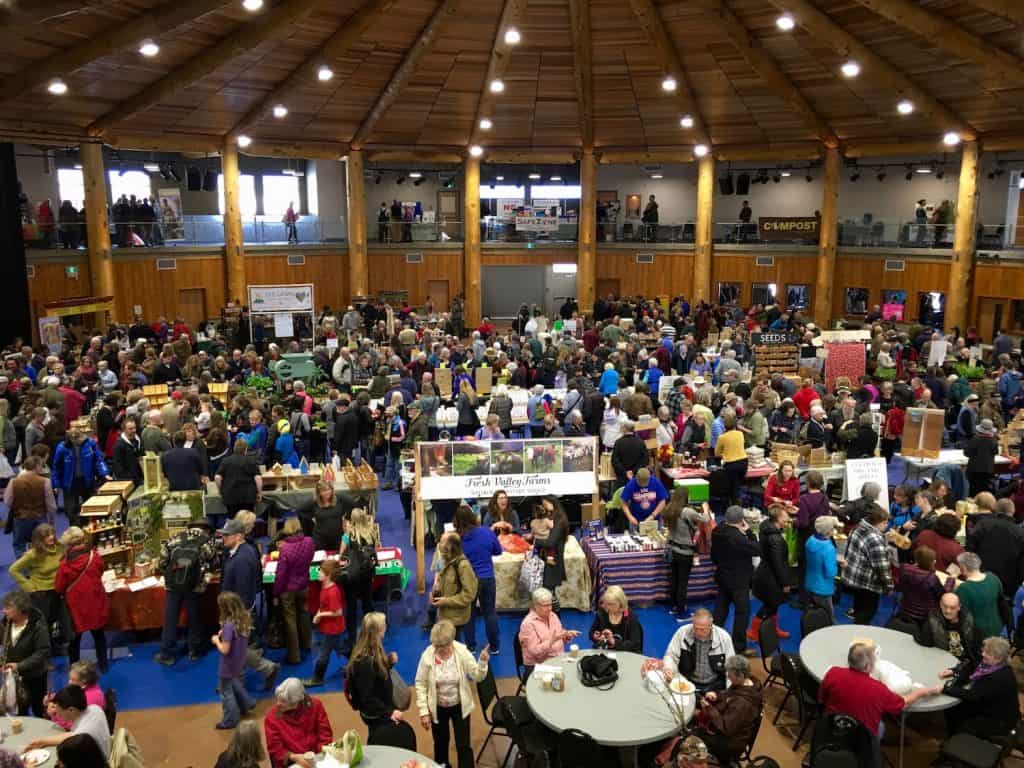
Why getting seeds from Seedy Saturday can be better than ordering from a catalog
Ordering seeds from a great seed catalog is wonderful (and sometimes necessary) but there are a few advantages to getting the seeds at your local Seedy Saturday seed swap. The first obvious advantage is that seeds you get from a community swap table are free. Assuming the seeds are healthy and germinate well, the free price tag is a definite bonus. If the seeds don’t germinate and you end up with lost time and no seedlings, that is definitely no good though. Weigh these risks when deciding where to get your seeds.
If you’d rather purchase seeds from a dependable retailer rather than take your chances with free seeds, Seedy Saturday may still be a better place to get them. Seeds that have been collected from local plants are best suited to your local growing environment. Think of local seeds as “customized” to your climate! Someone else has already done the work to adapt a given seed to the particulars of where you live.
Getting local expertise
Another bonus of buying seeds at Seedy Saturday is that you can ask the very person who grew and collected the seeds for tips. This can be very helpful, especially for new gardeners. Take full advantage of this when buying seeds at Seedy Saturday, and take notes!
Growers are often more than willing to help you with advice. They want you to succeed with their seeds and come back for more next year! Just try not to take 15 minutes to tell them a story about how you tried to grow such-and-such plants this one time. Seedy Saturday can be a crazy day for seed vendors. They can make a significant percentage of their income during events like this, so be sure not to take up all of your time chatting!
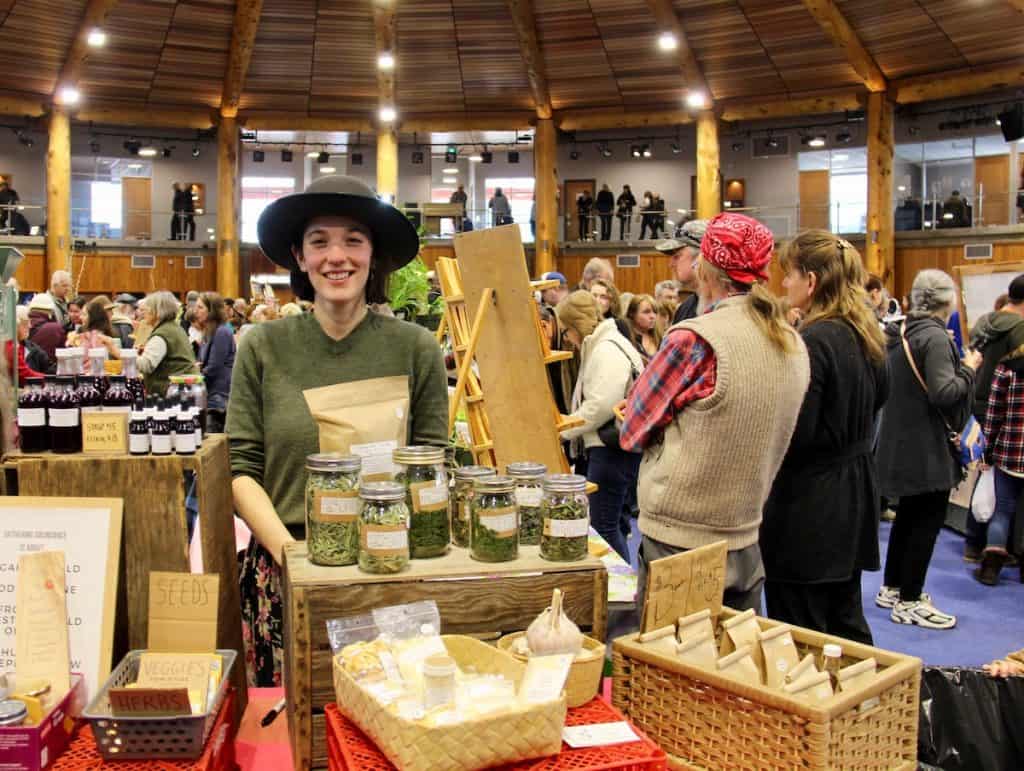
This brings me to another great reason to shop for seeds at your local seed swap…you’ll be supporting local suppliers! Buying local is a great way to invest in your community. Support the people who are keeping heirloom seeds available for the next generation by purchasing locally-grown seeds from them. You’ll also be helping keep rare and interesting plant varieties available for future generations just by growing them!
Workshops and skills demonstrations
Some local vendors and organizations will also host informational workshops during Seedy Saturday. You may be able to learn about organic gardening, seed starting, rainwater harvesting, or other relevant topics at your local event. Check with the organizers for details.
